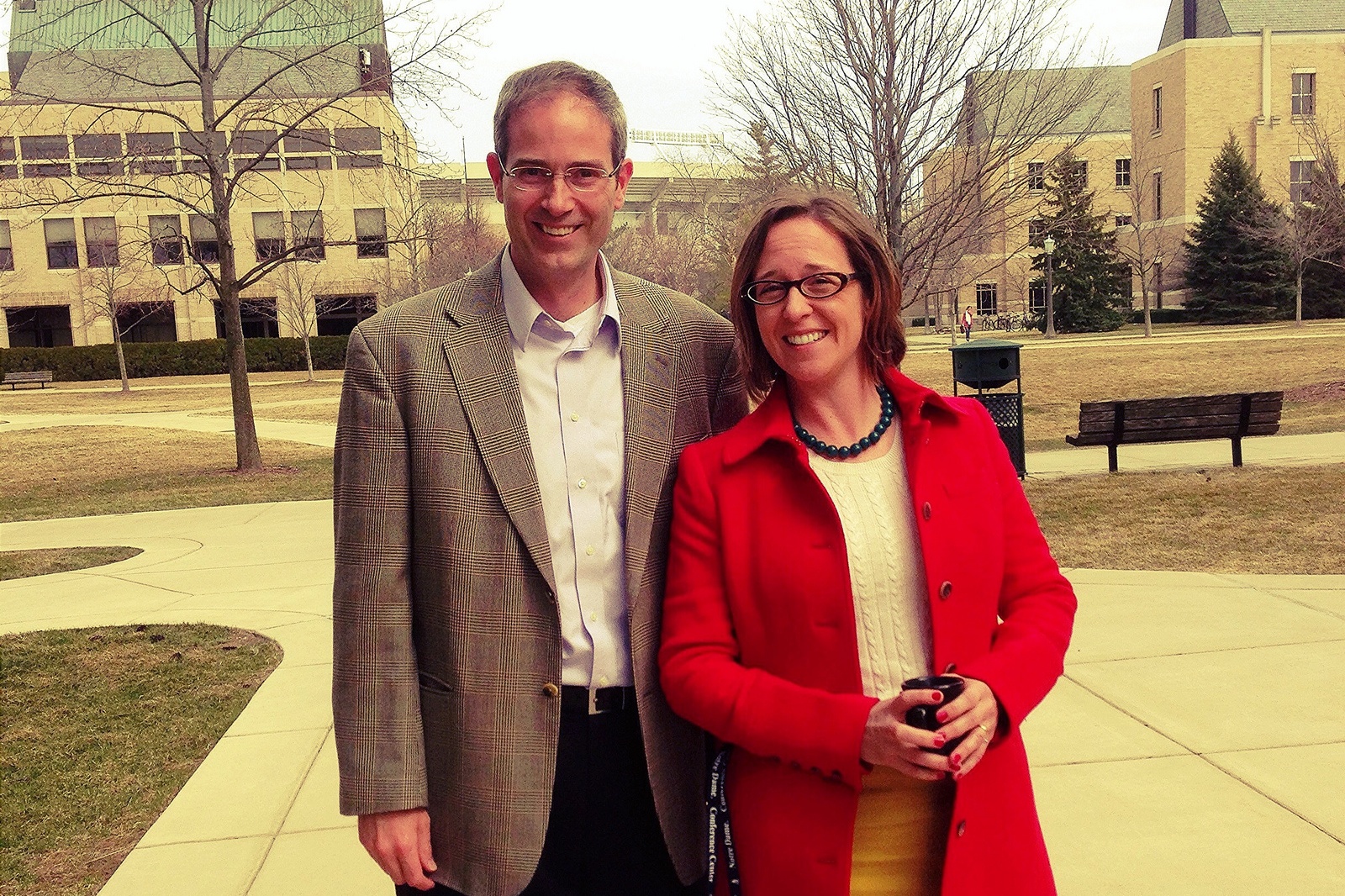As many of you know, I have long been experimenting with how to use twitter effectively in academic contexts. Many are skeptical of twitter’s ability to add substantive value to academic conversations because of its character constraints and its culture of snark and attempted witticisms.
So, over the past few months I have sought to cultivate a different culture of academic community through interactive lectures in which I’ve live tweeted my own presentations at the University of San Francisco, the Catholic University of America and Newman University. Those experiments taught me how important it is to model the sort of twitter behavior that is capable of enriching academic conversations rather than impoverishing them.
Last week when Wesleyan University President Michael Roth visited Penn State, @AdrielTrott was willing to join me in the endeavor and we were able to live tweet a number of the papers at the conference.
Here is the Storify I created for it:
As you can see, we do seem to have been able to add value to some conversations. During the Alasdair MacIntyre talk, for example, MacIntyre recommended a book the title of which many missed. However, because I heard the reference and knew the book, I was quickly able to tweet out a link. For me, the power of collaborative public note taking lies in the possibility that something important to you might evoke as response from someone that leads ultimately to a new insightful conversation. I can see the threads of a few conversations here that might be pursued further in the future.
Not a lot of people at the conference were following along on Twitter. However, the Storify is now posted on the Ancient Philosophy Society website, and I hope that more people will recognize the power of collaborative live public note taking via twitter.


First of all, thanks so much Chris and Adriel. I was sad not to be there with all you beautiful people this year, and I looked forward each day to seeing Adriel's tweets that showed up on my Facebook newsfeed (I don't tweet, myself). I just watched the slide show on Storify, and that filled in more detail. Most of all, the tweets helped me to get a basic feel for the papers, and stimulated my curiosity about the arguments made for some of the more intriguing claims. By the way, at least for me, the slide show could be slowed down a second or two more for each slide. Even though they're only 140 characters, I needed to go back several times to really take in the whole meaning. I will be on the lookout for papers coming out from several of the talks. Thanks again! –Jill
I am new to twitter, so I was particularly struck by how helpful it was to be forced to summarize a point in a short sentence. It made me have to think through things more clearly and actively during the papers I was tweeting. I also think it helped me construct better questions. Our exchange about Aristotle's adjustments during Nichols' talk was particularly good because you and I were learning from one another during the talk which prompted me to ask her about the parallel between her present and past work, and to ask her to think more about how Aristotle's own writing project performs the deliberative work we have been discussing. Tweeting made me a much more engaged conferee. So I think the value is not just what we bring to others reading our tweets but to our own habits of listening and responding that we cultivate throughout our academic lives.
One small question: I did often wonder if people were thinking that I was not paying attention because I was tweeting and I wondered if I would feel uncomfortable about that if I were the speaker. I certainly did not want to seem unengaged and unfocused and think some people might consider it rude. Thoughts on that?
I know Mary Nichols in particular was grateful for the question you asked. The example illustrates well how face to face conversations can be enriched by a twitter back channel.
As for worrying about seeming disengaged, I find tweeting from my iPad or computer is much more socially acceptable and I feel more comfortable than tweeting from my phone, which is how you were doing it. When you are tweeting from the phone, I feel like people think you are texting someone about something else.
From my perspective, I could see that you were taking paper notes too and moving back and forth between private paper notes and public digital notes. You always seemed engaged, so that did not seem to be a problem from where I sat.
For some reason, twitter wasn't picking up some of the tweets I did. Need to master the technology better. It was very cool to see that a student of mine at Baylor, Karl Aho, was following along. That speaks to me about the potential power this has for drawing people into the experience.
i really like the end of conference show you did, Chris. it really shows the substance in the collective experience that might be missed if the focus is just on a tweet or two.
Thanks, Anne-Marie. If you give me your twitter address, I can curate your tweets into the Storify. Maybe you weren't including the hashtag: #APS13.
I've done a lot of livetweeting in both design industry and academic conferences, and find that the key is to do something with it such as storify, so props to you for doing that.
Thanks, Vicky. I agree, you need to curate the tweets and reflect upon them further using something like Storify. That is a key to further amplifying the exchanges and to archiving them for future reference.